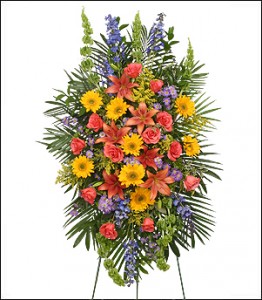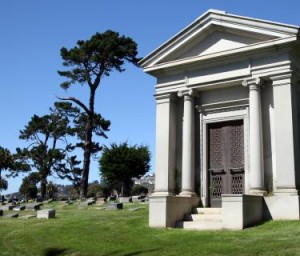 When planning a funeral, you will be working side by side with a funeral director to create a personalized funeral service in which to honor your loved one.
When planning a funeral, you will be working side by side with a funeral director to create a personalized funeral service in which to honor your loved one.
For many, the terminology associated with funerals and used by a funeral director can be confusing. Below is a glossary of the terms used in funeral planning.
Glossary of Funeral Terminology
Administrator: Any court appointed person or body put in charge of the estate.
Alternate Container: An unfinished wood box or other non-metal receptacle without ornamentation, generally lower in cost than caskets.
Arrangement Room: A room in the funeral home set aside for funeral staff and the family of the deceased to make funeral arrangements.
Autopsy: A pathologists medical examination of the organs of the deceased to determine the cause of death.
Attorney in Fact: Person granted power of attorney.
Beneficiary: Recipient of the proceeds of a will or insurance policy.
Bereaved: The immediate family of the deceased.
Casket/Coffin: A box or chest for burying remains.
Celebration of Life: An informal type of memorial service celebrating the deceased’s passing.
Catafalque: The stand on which the casket rests while in state and during the funeral service
Cortege: Funeral Procession.
Cremains: The remains which is left after cremation consisting of bone fragments.
Cremation: The technical heating process that reduces human remains to bone fragments.
Embalming: Removal of bodily fluids from human remains arterial and the replacement of artificial preservatives intended to delay decomposition and color of skin.
Eulogy: Public speaking at a funeral that honors the deceased
Family Car: limousine used for the immediate family in a funeral procession
Funeral Procession: Procession of motor vehicles between the church and cemetery
 Funeral Spray: A large bouquet of fresh cut flowers often displayed on an easel sent to the residence or the funeral home as a tribute to the deceased.
Funeral Spray: A large bouquet of fresh cut flowers often displayed on an easel sent to the residence or the funeral home as a tribute to the deceased.
Hearse/Casket Coach: Motor coach designed and used to convey casketed remains from the funeral service location to the cemetery
Inurnment: The placing of cremains in an urn.
Living Trust: A trust that has been established during the life of the trustee.
Living Will: A legal document that details the wishes of an individual concerning his or her own medical care.
Memorial Service: A formal or informal ceremony commemorating the deceased and celebration of their life without the presence of the body; may be held several weeks after a death.
Mortuary: Funeral Home or Funeral Service Provider.
Obituary: Notice of death that contains biographical details of the deceased; usually a newspaper notice
Pallbearers: Individuals who are asked to carry the casket during ceremony.
Preneed/Pre-Planning: Arranging a funeral in advance before the time of need.
Pulverization: The process of reducing the size of the bone fragments after cremation.
Register: A book made available by the funeral director to record the names of people visiting the funeral home to pay their respects to the deceased as well as entering data on deceased (name, dates of birth and death), name of officiant, place of interment, list of floral tributes, time and date of service, etc.
Reposing Room: A room of the funeral home where the body rests until the funeral service.
Transit Permit: Legal paper issued by local government that allows a body to be transported to burial place (additional permits may be required for cremation)
Urn: A container to hold cremated remains (cremains).
Viewing: When the deceased is available to be visited and seen by friends and relatives before or after the funeral service
Vigil: In Roman Catholicism, a service held on the eve of the funeral service.
Visitation: A scheduled time when the body is on display where friends and family can view the deceased.
Wake: A traditional watch or vigil over the deceased.
Will: A legal document stating the intentions of the deceased concerning the dispersal of their belongings.
Glossary of Cemetery Terminology
Burial Permit: Required by some states for human remains to be buried or cremated..
Cemetery: Ground for burial.
Cemetery Property: A grave, crypt or niche.
Cemetery Services: Opening and closing of graves, crypts or niches; setting grave liners and vaults; setting markers and long term maintenance of cemetery grounds and facilities.
Columbarium: A structure with niches (small spaces) for placing cremated remains in urns or other approved containers. May be outdoors or part of a mausoleum.
 Crypt: A space in a mausoleum or other building to hold cremated or whole remains.
Crypt: A space in a mausoleum or other building to hold cremated or whole remains.
Disinter: To dig up or remove remains from a burial place
Disposition: The placement of cremated or whole remains in their final resting place.
Entombment: Burial in a mausoleum.
Grave: A space in the ground in a cemetery for the burial of remains.
Grave Liner: A cover that fits over the casket in the grave.
Graveside Burial: A service to commemorate the deceased held at the cemetery before burial.
Green Burial: Also called Direct Burial, is the process of burying they body without the use of chemical preservation.
Headstone: A grave marker or monument marking the grave site.
Interment: Burial in the ground, inurment or entombment of the remains.
Lowering Device: Mechanism placed over the open grave with two or more straps to secure the casket and then used to lower the casket into the grave by unwinding the straps from a cylinder to lower casket into place
Mausoleum: A structure or building, often on cemetery grounds that holds caskets and remains.
Niche: The chamber in a columbarium where an urn is placed.
Plot: Area of ground in a cemetery that is owned by a family or individual and usually contains multiple graves
Tomb: Chamber excavated from rock or earth to receive human remains
Vault: A structure placed within a grave to enclose the casket, preventing crushing of the remains/cremains, to protect the casket or urn and used to prevent settling of land.
This funeral planning information was brought to you by FSN Funeral Homes.
Tags: Cemetery Terminology, Funeral Planning, Funeral Terminology